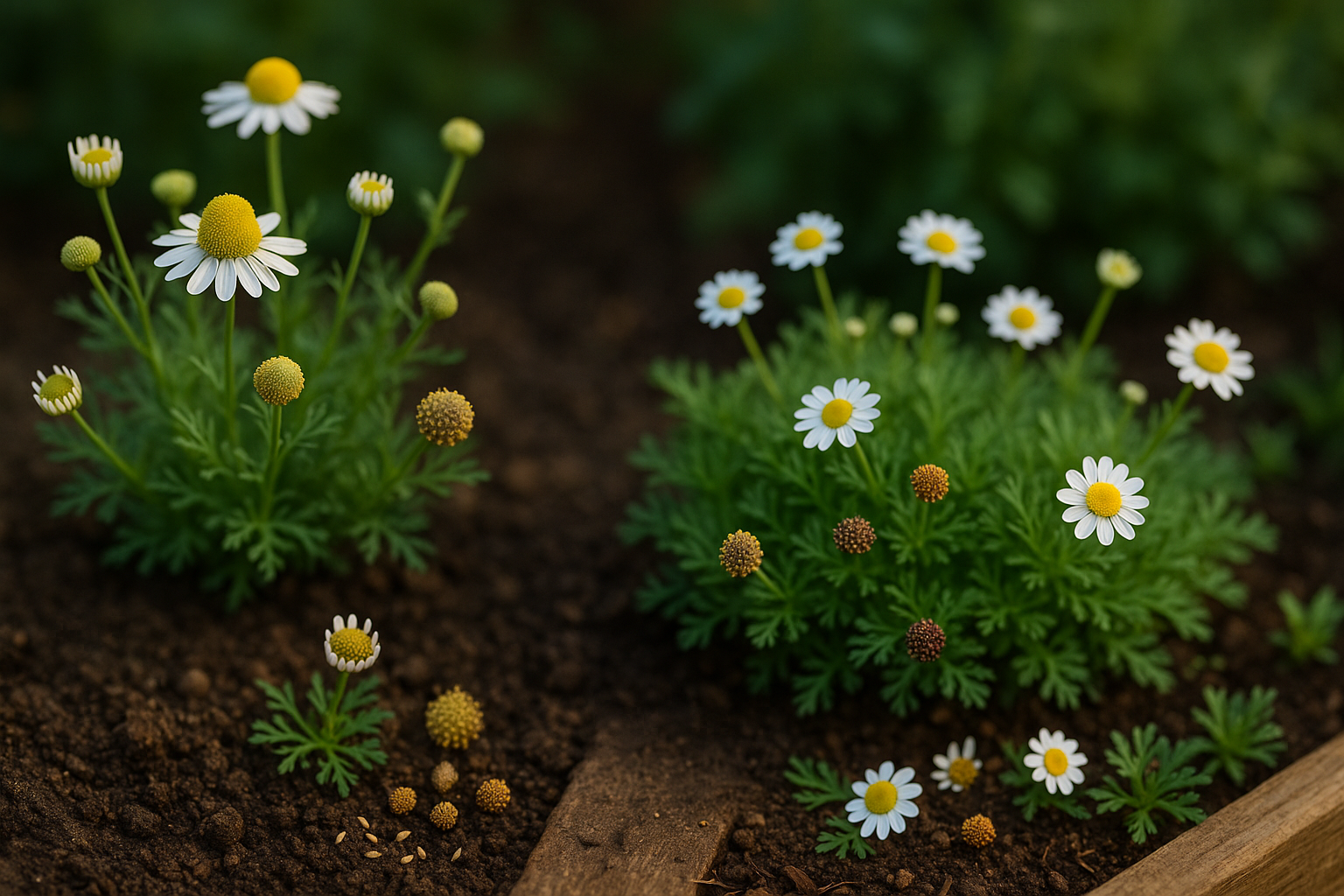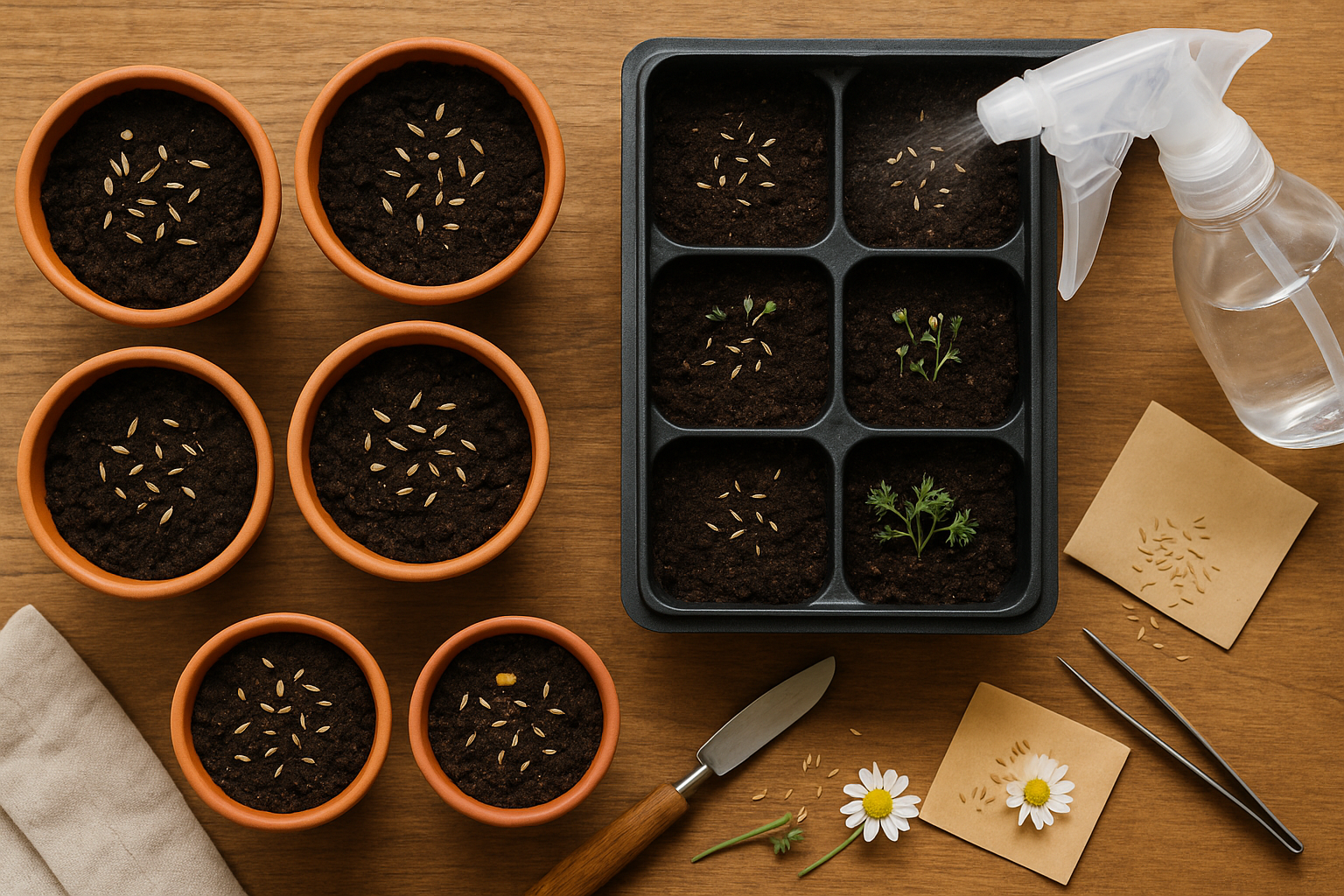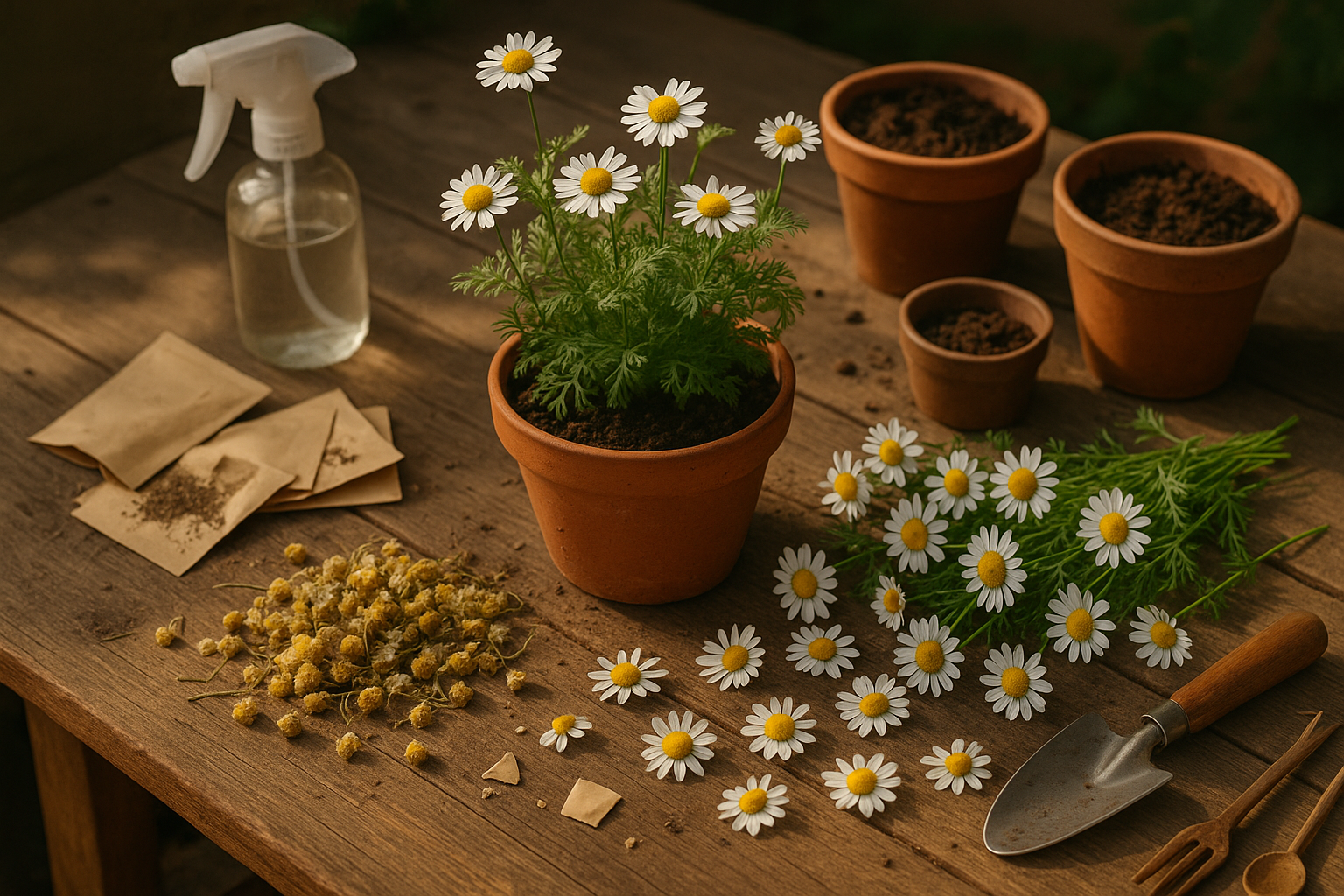Introduction
If you’ve ever wondered whether you can regrow chamomile from store-bought flowers, you’re not alone—many gardening enthusiasts are curious about turning a fresh bouquet into a flourishing plant. The question is: can you really start new chamomile plants using just the flowers you bought at the store, or do you need actual seeds to succeed?
Unlike kitchen staples like green onions or potatoes, chamomile typically can’t be regrown directly from the flower alone. It’s the seeds within the flower heads that contain the real growing potential. However, if your store-bought blooms still contain intact seed heads, you might be in luck.
Trying to regrow chamomile from store bouquets is not only a fun project, but it can also save money and reduce waste. Plus, nurturing your own chamomile adds a fresh, fragrant touch to your kitchen and a deeper connection to the calming tea you enjoy.
Understanding Chamomile

When it comes to chamomile, there are two main varieties you’ll encounter: German chamomile (Matricaria chamomilla) and Roman chamomile (Chamaemelum nobile).
German chamomile is an annual plant best known for its use in teas and herbal remedies, featuring delicate, daisy-like flowers with a sweet scent. Roman chamomile, on the other hand, is a perennial prized for its slightly more bitter taste. It’s often used as ground cover in gardens as well as in aromatherapy products.
When shopping for chamomile, you’ll typically find it in three forms:
- Fresh flowers
- Dried flowers (often sold for teas)
- Potted plants
While all of these are great for culinary or therapeutic use, they have different potentials for growing new plants. Dried or fresh chamomile flowers from the store usually consist of just the petals or flower heads, which contain few, if any, viable seeds—meaning you can’t plant them and expect new chamomile to sprout.
If your goal is to grow your own chamomile, look for potted plants or seed packets, as these contain living roots or true seeds. Always check if the product is intended for gardening use; culinary-grade flowers, especially dried ones, are unlikely to germinate.
Harvesting Seeds from Store-Bought Chamomile
Harvesting seeds from store-bought chamomile can be a rewarding way to start your own plants, but it’s important to know what to look for and manage expectations. First, identify mature flower heads—the best candidates are those that are dry, faded, and turning brown, rather than freshly picked or still bright white and yellow. The petals should be shriveled, and the cone in the center of the flower should feel firm, not soft or mushy, indicating seed maturity.
To harvest seeds, gently pinch or snip the dried flower heads and place them in a paper bag. Let them dry for a few more days to ensure no hidden moisture remains. Once fully dry, crumble the flower heads between your fingers over a piece of white paper; chamomile seeds are tiny, yellow-brown, and oval-shaped. Carefully separate the seeds from chaff and leftover bits by lightly blowing or using tweezers.
However, keep in mind that many store-bought chamomile flowers—especially those sold for tea—are often harvested while still immature or may be heat-treated, which can impact seed viability. To improve your chances, look for whole, dried flower heads rather than broken pieces, and avoid pre-packaged tea bags, which rarely contain viable seeds.
Better luck often comes from buying dried whole chamomile flowers from a reputable herbalist or specialty grocer. While not every seed will sprout, this hands-on approach is a fun experiment in self-sufficiency and can yield charming backyard blooms if you select your flowers with care.
How to Grow Chamomile from Harvested Seeds

Growing chamomile from harvested seeds is simple and rewarding when you have the right supplies and know-how. Start by gathering small pots or seed trays, good-quality potting soil, drainage materials like pebbles or coarse sand, a spray bottle for watering, and your harvested chamomile seeds.
Indoor Sowing
Fill each pot with soil, add a thin layer of pebbles at the bottom for drainage, and lightly water the soil. Sprinkle the seeds evenly over the surface—chamomile seeds need light to germinate, so don’t cover them deeply; just press them gently into the soil.
Outdoor Sowing
If sowing outdoors, choose a patch of well-draining soil in a sunny spot. Scatter the seeds during early spring, pressing them onto the soil’s surface without burying them.
Whether indoors or out, keep the soil consistently moist but never soggy—mist with a spray bottle as needed. Chamomile thrives in full sun to partial shade and prefers temperatures between 60-68°F (15-20°C).
Germination and Seedling Care
Seeds typically germinate in 7–14 days; you’ll notice tiny, delicate green shoots emerging. Healthy seedlings have strong little stems and evenly spaced, bright green leaves. Once they develop a second set of true leaves and are sturdy enough to handle, you can transplant them outdoors if started indoors, spacing them about 8–10 inches apart to ensure good airflow.
Ongoing Care
Place your pots or beds in a sunny position and water regularly, but be careful not to overwater—chamomile dislikes wet feet. With just a little care, you’ll be rewarded with a beautiful, fragrant patch of chamomile ready to enjoy in tea or the garden.
Caring for and Transplanting Chamomile Seedlings
Caring for young chamomile seedlings begins with maintaining consistent moisture—keep the soil lightly damp but never soggy, as overwatering can cause damping off, a fungal disease that makes seedlings collapse at the base. Water gently using a spray bottle or a watering can with a fine rose to avoid disturbing the roots.
Place your seedling trays in a spot with plenty of bright, indirect light—ideally 12-16 hours a day, using a grow light or a sunny windowsill. If seedlings become tall and spindly (a sign of leggy growth), they likely aren’t getting enough light. Move them closer to the light source or supplement with LED grow lights.
When seedlings develop two true leaves and reach a couple of inches high, thin them out by snipping the weakest plants at soil level. Leave a few inches between each remaining seedling for better airflow and stronger growth.
Once the seedlings are sturdy and about 2-3 inches tall, begin hardening them off by gradually exposing them to outdoor conditions over the course of a week. After the danger of frost has passed, transplant them into larger pots or garden beds. Handle seedlings by their leaves (not stems) and space them 8-10 inches apart to give them plenty of room to flourish.
Other Ways to Propagate Store-Bought Chamomile
If you’ve picked up potted Roman chamomile from the store, you can easily propagate it by division or cuttings. To divide, gently separate the root clumps and replant the sections in fresh soil; this works especially well in early spring when the plant is actively growing.
For cuttings, snip a healthy stem just below a leaf and root it in water or damp potting mix until new growth appears.
It’s important to note that you can’t regrow chamomile from the dried or cut flowers sold for tea—these lack the seeds or living tissue needed for new plants.
If propagation from store-bought flowers isn’t successful, consider these options:
- Ask a local gardener for extra plants
- Check local nurseries for fresh seedlings
- Purchase seeds online from reputable suppliers
This way, you’ll have a reliable source for growing your own chamomile at home.
Troubleshooting & Tips for Success
Starting your gardening journey can come with a few hurdles, but there are simple solutions for common problems. If your seeds aren’t sprouting, poor seed viability is often the culprit—always check expiration dates and buy from trusted suppliers like Burpee or Baker Creek. For stubborn seeds, try soaking them overnight to boost germination.
If your soil is too compact or dry, seedlings might struggle as well. Gently loosen the top layer and keep the soil consistently moist, but not soggy.
Pests such as aphids or cutworms can attack young plants, so inspect leaves daily. Wash pests off with a gentle spray of water or use organic solutions like neem oil.
Fungal diseases, often caused by overwatering or poor airflow, can be managed by spacing plants well and watering at the base instead of from above.
If you’ve tried these fixes and still have trouble, starter plants from reputable nurseries—like your local garden center or online sellers such as Plant Delights Nursery—can give you a head start.
Regular observation and quick responses are key—most problems can be solved early with a proactive approach and a little know-how.
